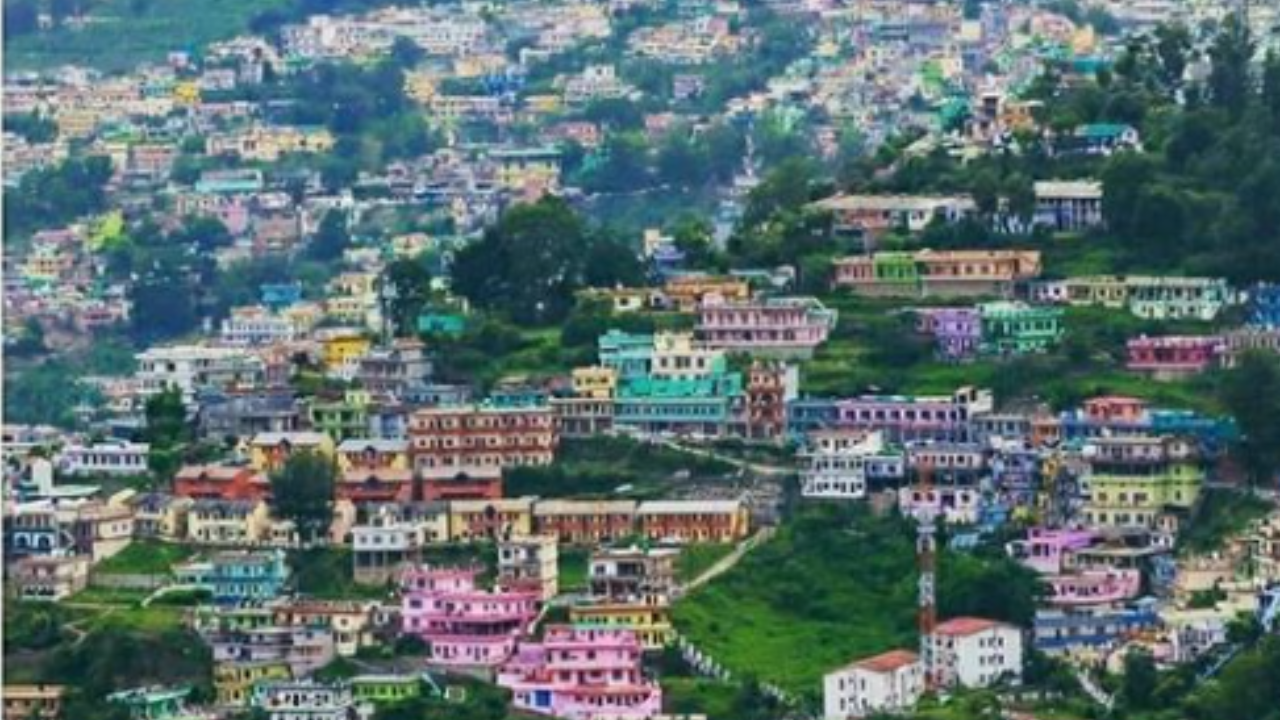'Civilisation Even Before Temples': ASI To Dig Up City Under Uttarakhand's Almora
Some time ago, a massive Shivling measuring 1.2 meters tall and approximately 2 feet in diameter was discovered in that vicinity. The archaeologists believe this "rare" Shivling dates back to the 9th century. It is presumed to have been part of a temple constructed by the Katyuri rulers, an establishment that eventually vanished over time.

Almora district Uttarakhand. (Photo Credit: Facebook/ Uttarakhand explore)
The Archaeological Survey of India (ASI) has initiated investigations into the potential for excavation in Gevad valley, situated along the Ramganga river in Uttarakhand's Almora district. The ASI suspects the presence of an ancient city concealed beneath the soil. Officials report that a team of ASI specialists has conducted a preliminary survey of the valley, and preparations to uncover this "lost habitation" may commence shortly.
According to The Times of India Superintending Archaeologist of Dehradun circle- Manoj Saxena said, "Our survey reports are quite convincing. An advanced survey is currently underway for further study of the valley falling under the Chaukhutia area. A proposal for excavation is being prepared."
When ASI was asked what led them to believe that there was an ancient city beneath Gevad valley, the official said, "The area, spread over 10 km along Ramganga, consisting of flat land, has numerous temples dating back to the 9th and 10th centuries which were built by Katyuri rulers. Presence of the cluster of centuries-old temples indicates that there must have been a civilisation there even before the temples were built."
Dr Chandra Singh Chauhan, regional state archaeological officer, said, "We have recently found several small 'devasthanams' (small temples) which are one to two feet in height. Earlier also, in the 1990s, a survey was conducted in the said area by the department of ancient Indian history, culture and archaeology of Garhwal University in which a temple of Vakratundeshvar (Ganesh) built in the 9th century and seven other temples of Nath Sampraday were found which show that human habitation existed in the area."
Professor Rakesh Chandra Bhatt, who was part of the team that conducted the survey in 1993, said, "During the excavation, we found secondary burials, chambers and big jars in which remains of the dead were kept. We also found painted pottery and bowls which are similar to the pottery found in the Gangetic Doab in Meerut's Hastinapur and Ahichchhatra in Bareilly, dating back to the 1st- 5th century BC."
He added, "Although we could not find any human settlement there at that time, our findings indicate that a lost city is waiting to be discovered. This could be a major breakthrough for ASI."
Some time ago, a massive Shivling measuring 1.2 meters tall and approximately 2 feet in diameter was discovered in that vicinity. The archaeologists believe this "rare" Shivling dates back to the 9th century. It is presumed to have been part of a temple constructed by the Katyuri rulers, an establishment that eventually vanished over time.
Trending:
End of Article
Subscribe to our daily Newsletter!





Related News





Patanjali Misleading Ad Case: SC Takes Strong Objection To IMA Director's Remark, Says 'This Will Be More Serious...'

In SC Today, Kejriwal's Five Questions To ED As Hearing Deferred To Friday

In Big Setback For AAP, Delhi Court Dismisses Both Bail Pleas Of Former Deputy CM Manish Sisodia

Indore Airport Receives Bomb Threat Via Email, Probe On

7 Maoists Killed In Chhattisgarh Encounter | 'Huge Cache' Of Weapons Recovered









